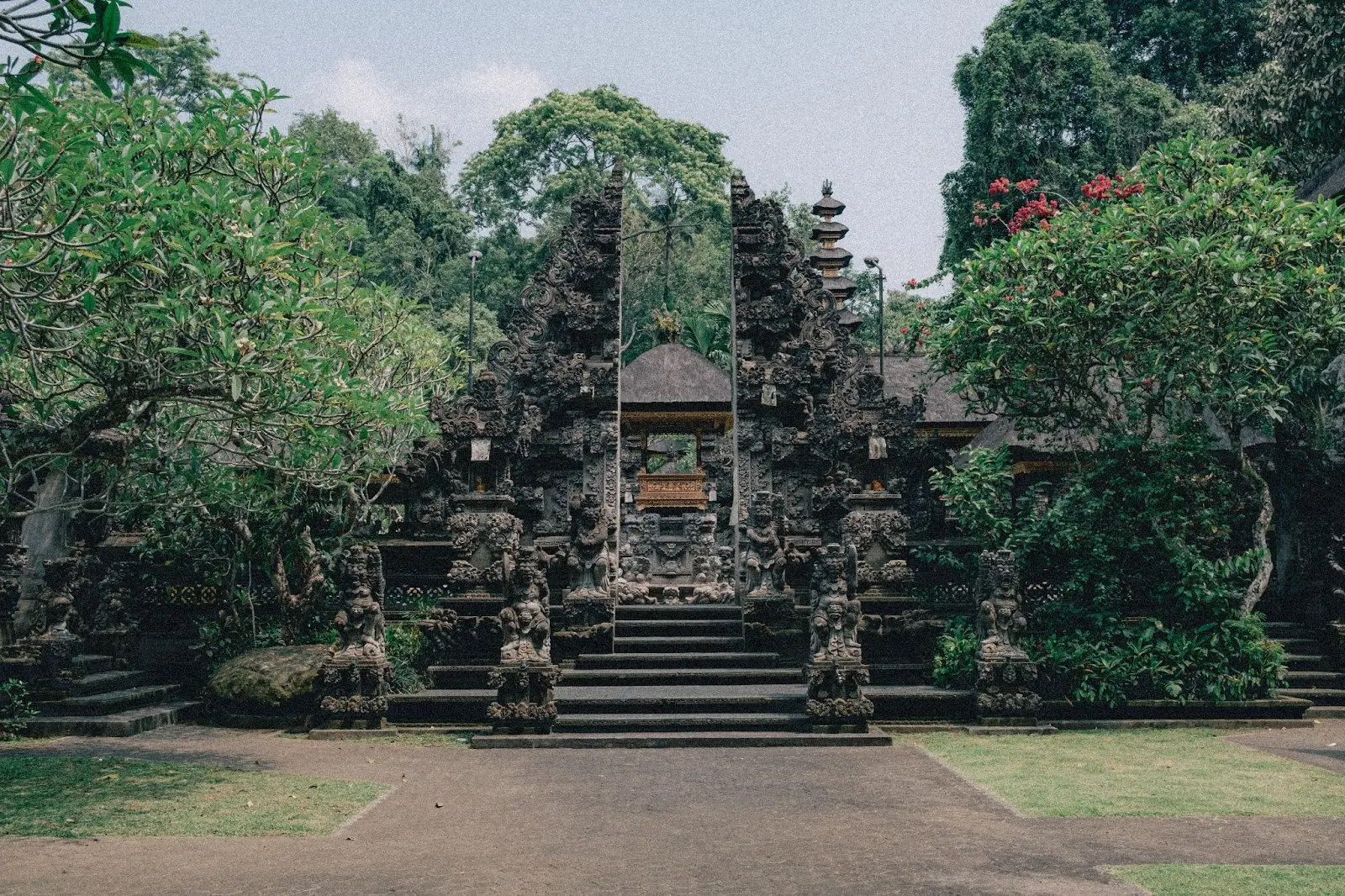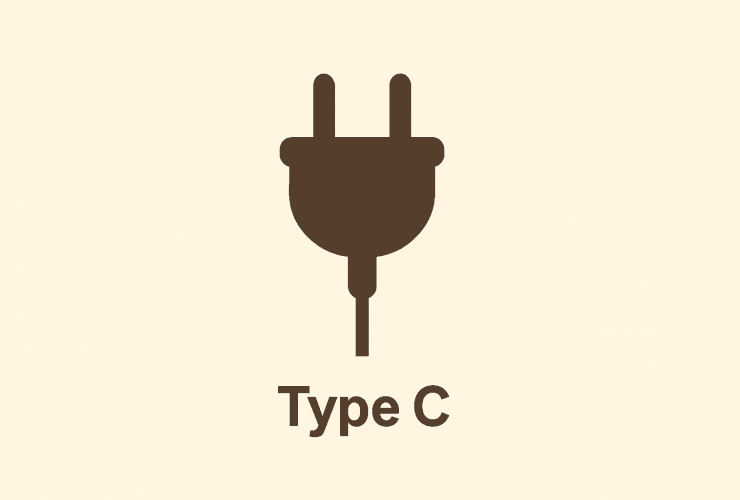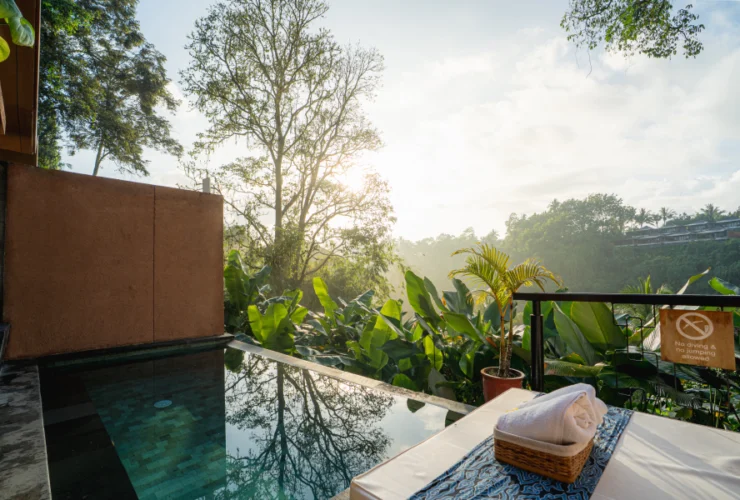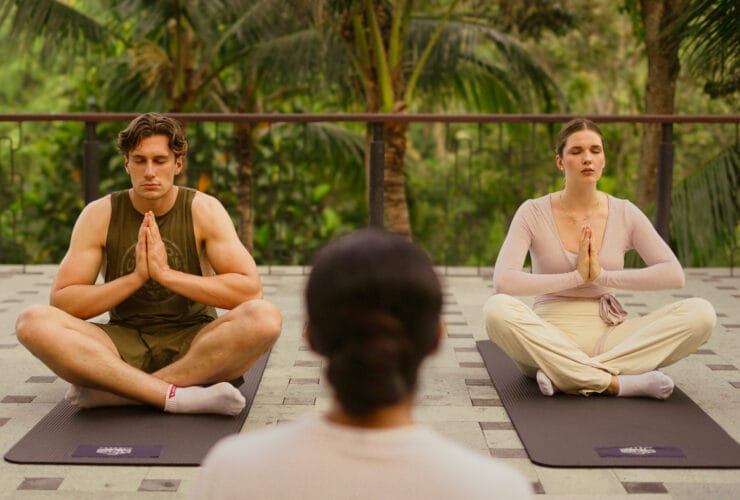Journal
Where Sacred Rivers Meet: The Soulful Harmony of Amora Ubud
In the cultural heart of Ubud, where misty mornings dance across jungle ridges and time seems to slow, flows a story written not in ink, but in water. Just below the serene Campuhan Ridge Walk, two ancient rivers, Tukad Wos Lanang and Tukad Wos Wadon, gently converge. One masculine, one feminine. One firm and assertive, the other soft and nurturing. Where they meet, something sacred is born: balance, harmony, and renewal.
This confluence, known as Campuhan, is no ordinary river junction. In Balinese philosophy, it is a spiritual meeting point, a place where energies unite to form a single sacred stream. It is here that the legendary sage Rsi Markandeya meditated and established Pura Gunung Lebah, an 8th-century temple that remains a powerful symbol of duality and devotion.
A Temple of Duality and Devotion
Tucked deep within a lush ravine, veiled by towering palms and ancient banyan trees, stands Pura Gunung Lebah, a temple both hidden and hallowed. It is not merely a sacred site, but a spiritual compass, quietly guiding all who visit toward a deeper understanding of balance. Built in the 8th century by the revered sage Rsi Markandeya, this temple was founded at a place where nature itself whispers profound truths, the confluence of the Tukad Wos Lanang and Tukad Wos Wadon rivers.
In Balinese cosmology, this is no coincidence. The temple’s location at the meeting point of these rivers, one masculine, one feminine, is a conscious embodiment of the philosophy of Rwa Bhineda, the belief that the universe is built on the dynamic interplay of opposites. Every carving, every offering, every chant that echoes through the temple grounds reinforces this sacred duality: light and dark, sun and moon, strength and surrender, the seen and unseen.
The Tukad Wos Lanang, whose name means “the male river,” is said to channel an energy that is active, directive, and bold. It rushes forward with clarity and purpose, like the assertive force of intention.
In contrast, the Tukad Wos Wadon, or “the female river,” flows with gentle curves and soothing rhythm, a symbol of receptivity, intuition, and nurturing spirit. Their meeting is not a collision, but a communion, a sacred moment of union that transcends individuality and becomes wholeness.
Standing within Pura Gunung Lebah, you feel this union in the air. The temple’s design reflects not grandeur, but grounded elegance. Moss-covered shrines and worn stone steps speak of centuries of quiet devotion. Balinese priests in white sarongs perform age-old rituals to honor not only the gods, but the eternal dance of duality that sustains life. Incense swirls skyward, carrying prayers that mirror the river’s own message: that harmony is found not in sameness, but in sacred contrast.
It is a place where worship is a dialogue with nature, and where nature, in turn, speaks back. The sound of bamboo rustling, the scent of frangipani, the rhythm of drums during a ceremony, all become part of a living tapestry of devotion. Visitors often arrive seeking beauty and leave having touched something deeper: a sense of inner alignment, of returning to the source.
And just above this sacred cradle of duality lies Amora Ubud, cradled by the same forces, whispering the same truths. The temple below and the retreat above are not separate, but part of the same spiritual story, a story of balance, reverence, and belonging.

Amora Ubud: A Retreat Woven Into the Land
Just above this sacred site, along the ridgeline kissed by early morning sun, lies Amora Ubud, a romantic retreat that doesn’t just sit on the land, but belongs to it. Every villa, every path, every open-air pavilion is attuned to the rhythm of the rivers below.
More Than Romance: A Spiritual Resonance
Guests of Amora Ubud often describe their stay not simply as restful, but transformative. The energy of the rivers seems to echo through the villas, inviting reflection, connection, and renewal.
One of the most meaningful ways to begin your day here is with a morning walk, a shared journey you can take with your loved one. As you follow the path along the Campuhan Ridge, the natural world whispers stories of harmony. The two sacred rivers, Wos Lanang and Wos Wadon, flow alongside each other, symbolizing the union of masculine and feminine energies, a timeless reflection of togetherness.
With each step, the walk becomes more than just physical movement; it becomes a meditative passage toward deeper connection with your partner, with nature, and with self. The journey leads you to Pura Gunung Lebah, a temple where these rivers converge, and where visitors often pause in quiet reverence.
Here at Amora Ubud, this is not luxury for luxury’s sake. It is comfort imbued with meaning, serenity shaped by centuries of spiritual wisdom an experience that deepens both love and understanding.
Where Opposites Become One
At Amora Ubud, the union of Tukad Wos Lanang and Wadon is not a backdrop, it is a living metaphor. For couples, it reflects the essence of romantic partnership: distinct energies merging into shared harmony. For solo travelers, it symbolizes the reunion of self with soul.
Here, love is not only something you express, it is something you feel in the land itself. In the silence. In the sacred geometry of nature. In the way the rivers continue to flow, endlessly, as they always have.



